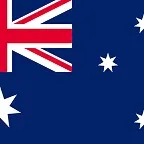
Spain
Spain,[g] officially the Kingdom of Spain,[a][h] is a country in Southern and Western Europe with territories in North Africa.[i] Featuring the southernmost point of continental Europe, it is the largest country in Southern Europe and the fourth-most populous European Union member state. Spanning across the majority of the Iberian Peninsula, its territory also includes the Canary Islands, in the Eastern Atlantic Ocean, the Balearic Islands, in the Western Mediterranean Sea, and the autonomous cities of Ceuta and Melilla, in mainland Africa. Peninsular Spain is bordered to the north by France, Andorra, and the Bay of Biscay; to the east and south by the Mediterranean Sea and Gibraltar; and to the west by Portugal and the Atlantic Ocean. Spain's capital and largest city is Madrid, and other major urban areas include Barcelona, Valencia, Seville, Zaragoza, Málaga, Murcia, and Palma de Mallorca.
In early antiquity, the Iberian Peninsula was inhabited by Celts, Iberians, and other pre-Roman peoples. With the Roman conquest of the Iberian peninsula, the province of Hispania was established. Following the Romanisation and Christianisation of Hispania, the fall of the Western Roman Empire ushered in the inward migration of tribes from Central Europe, including the Visigoths, who formed the Visigothic Kingdom centred on Toledo. In the early eighth century, most of the peninsula was conquered by the Umayyad Caliphate, and during early Islamic rule, Al-Andalus became a dominant peninsular power centred on Córdoba. The several Christian kingdoms that emerged in Northern Iberia, chief among them Asturias, León, Castile, Aragon and Navarre, made an intermittent southward military expansion and repopulation, known as the Reconquista, repelling Islamic rule in Iberia, which culminated with the Christian seizure of the Nasrid Kingdom of Granada in 1492. The dynastic union of the Crown of Castile and the Crown of Aragon in 1479 under the Catholic Monarchs is often considered the de facto unification of Spain as a nation state.
During the Age of Discovery, Spain pioneered the exploration and conquest of the New World, made the first circumnavigation of the globe and formed one of the largest empires in history.[16] The Spanish Empire reached a global scale and spread across all continents, underpinning the rise of a global trading system fueled primarily by precious metals. In the 18th century, the Bourbon Reforms, particularly the Nueva Planta decrees, centralized mainland Spain, strengthening royal authority and modernizing administrative structures.[17] In the 19th century, after the victorious Peninsular War against Napoleonic occupation forces, the following political divisions between liberals and absolutists led to the breakaway of most of the American colonies. These political divisions finally converged in the 20th century with the Spanish Civil War, giving rise to the Francoist dictatorship that lasted until 1975. With the restoration of democracy and its entry into the European Union, the country experienced an economic boom that profoundly transformed it socially and politically. Since the Spanish Golden Age, Spanish art, architecture, music, painting, literature, and cuisine have been influential worldwide, particularly in Western Europe and the Americas.[18][19][20] Spain is the world's second-most visited country, has one of the largest numbers of World Heritage Sites, and is the most popular destination for European students.[21][22][23] Its cultural influence extends to over 600 million Hispanophones, making Spanish the world's second-most spoken native language and the world's most widely spoken Romance language.[24]
Spain is a secular parliamentary democracy and a constitutional monarchy,[25] with King Felipe VI as head of state. A developed country, Spain has a high nominal per capita income globally, and its advanced economy ranks among the largest in the world.[26] It is also the fourth-largest economy in the European Union. Spain is considered a regional power with a cultural influence that extends beyond its borders, and continues to promote its cultural value through participation in multiple international organizations and forums.
Etymology
The name of Spain (España) comes from Hispania, the name used by the Ancient Romans for the Iberian Peninsula during the Roman Republic and the Roman Empire. The etymology of the term Hispania remains uncertain.
The Phoenicians referred to the region as i-shphan-im possibly meaning "land of rabbits or hyraxes",[27] "land of metals",[28][29] or "northern island".[30] Roman coins struck in the region from the reign of Hadrian show a female figure with a rabbit at her feet,[31] and Strabo called it the "land of the rabbits".[32]
History
Prehistory and pre-Roman peoples

Archaeological research at Atapuerca indicates the Iberian Peninsula was populated by hominids 1.3 million years ago.[33]
Modern humans first arrived in Iberia from the north on foot about 35,000 years ago.[34] The best-known artefacts of these prehistoric human settlements are the paintings in the Altamira cave of Cantabria in northern Iberia, which were created from 35,600 to 13,500 BCE by Cro-Magnon.[35][36] Archaeological and genetic evidence suggests that the Iberian Peninsula acted as one of several major refugia from which northern Europe was repopulated following the end of the last ice age.
The two largest groups inhabiting the Iberian Peninsula before the Roman conquest were the Iberians and the Celts.[37] The Iberians inhabited the Mediterranean side of the peninsula. The Celts inhabited much of the interior and Atlantic sides of the peninsula. Basques occupied the western area of the Pyrenees mountain range and adjacent areas; Phoenician-influenced Tartessians flourished in the southwest; and Lusitanians and Vettones occupied areas in the central west. Several cities were founded along the coast by Phoenicians, and trading outposts and colonies were established by Greeks in the East. Eventually, Phoenician-Carthaginians expanded inland towards the meseta; however, due to the bellicose inland tribes, the Carthaginians settled on the coasts of the Iberian Peninsula.
Roman Hispania and the Visigothic Kingdom

During the Second Punic War, roughly between 210 and 205 BCE, the expanding Roman Republic captured Carthaginian trading colonies along the Mediterranean coast. Although it took the Romans nearly two centuries to complete the conquest of the Iberian Peninsula, they retained control of it for over six centuries. Roman rule was bound together by law, language, and the Roman road.[38]
The cultures of the pre-Roman populations were gradually Romanised (Latinised) at different rates depending on what part of the peninsula they lived in, with local leaders being admitted into the Roman aristocratic class.[j][39]
Hispania (the Roman name for the Iberian Peninsula) served as a granary for the Roman market, and its harbours exported gold, wool, olive oil, and wine. Agricultural production increased with the introduction of irrigation projects, some of which remain in use. Emperors Hadrian, Trajan, Theodosius I, and the philosopher Seneca were born in Hispania.[k] Christianity was introduced into Hispania in the 1st century CE, and it became popular in the cities in the 2nd century.[39] Most of Spain's present languages and religions, as well as the basis of its laws, originate from this period.[38] Starting in 170 CE, incursions of North-African Mauri in the province of Baetica took place.[40]

The Germanic Suebi and Vandals, together with the Sarmatian Alans, entered the peninsula after 409, weakening the Western Roman Empire's jurisdiction over Hispania. The Suebi established a kingdom in north-western Iberia, whereas the Vandals established themselves in the south of the peninsula by 420 before crossing over to North Africa in 429. As the western empire disintegrated, the social and economic base became greatly simplified; the successor regimes maintained many of the institutions and laws of the late empire, including Christianity and assimilation into the evolving Roman culture.
The Byzantines established an occidental province, Spania, in the south, with the intention of reviving Roman rule throughout Iberia. Eventually, however, Hispania was reunited under Visigothic rule.
Muslim era and Reconquista
From 711 to 718, as part of the expansion of the Umayyad Caliphate which had conquered North Africa from the Byzantine Empire, nearly all of the Iberian Peninsula was conquered by Muslims from across the Strait of Gibraltar, resulting in the collapse of the Visigothic Kingdom. Only a small area in the mountainous north of the peninsula stood out of the territory seized during the initial invasion. The Kingdom of Asturias-León consolidated upon this territory. Other Christian kingdoms, such as Navarre and Aragon in the mountainous north, eventually surged upon the consolidation of counties of the Carolingian Marca Hispanica.[41] For several centuries, the fluctuating frontier between the Muslim and Christian-controlled areas of the peninsula was along the Ebro and Douro valleys.

Conversion to Islam proceeded at an increasing pace. The muladíes (Muslims of ethnic Iberian origin) are believed to have formed the majority of the population of Al-Andalus by the end of the 10th century.[42][43]
A series of Viking incursions raided the coasts of the Iberian Peninsula in the 9th and 10th centuries.[44] The first recorded Viking raid on Iberia took place in 844; it ended in failure with many Vikings killed by the Galicians' ballistas; and seventy of the Vikings' longships captured on the beach and burned by the troops of King Ramiro I of Asturias.
In the 11th century, the Caliphate of Córdoba collapsed, fracturing into a series of petty kingdoms (Taifas),[45] often subject to the payment of a form of protection money (Parias) to the Northern Christian kingdoms, which otherwise undertook a southward territorial expansion. The capture of the strategic city of Toledo in 1085 marked a significant shift in the balance of power in favour of the Christian kingdoms.[46] The arrival from North Africa of the Islamic ruling sects of the Almoravids and the Almohads achieved temporary unity upon the Muslim-ruled territory, with a stricter, less tolerant application of Islam, and partially reversed some Christian territorial gains.

The Kingdom of León was the strongest Christian kingdom for centuries. In 1188, the first form (restricted to the bishops, the magnates, and 'the elected citizens of each city') of modern parliamentary session in Europe was held in León (Cortes of León).[47] The Kingdom of Castile, formed from Leonese territory, was its successor as strongest kingdom. The kings and the nobility fought for power and influence in this period. The example of the Roman emperors influenced the political objective of the Crown, while the nobles benefited from feudalism.
Muslim strongholds in the Guadalquivir Valley such as Córdoba (1236) and Seville (1248) fell to Castile in the 13th century. The County of Barcelona and the Kingdom of Aragon entered in a dynastic union and gained territory and power in the Mediterranean. In 1229, Mallorca was conquered, so was Valencia in 1238. In the 13th and 14th centuries, the North-African Marinids established some enclaves around the Strait of Gibraltar. Upon the conclusion of the Granada War, the Nasrid Sultanate of Granada (the remaining Muslim-ruled polity in the Iberian Peninsula after 1246) capitulated in 1492 to the military strength of the Catholic Monarchs, and it was integrated from then on in the Crown of Castile.[48]







